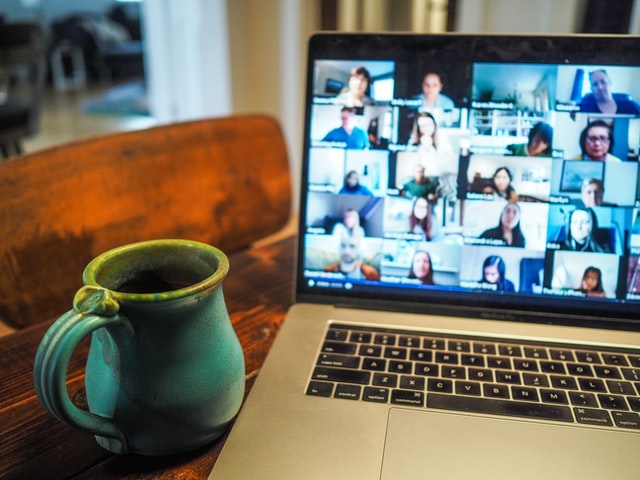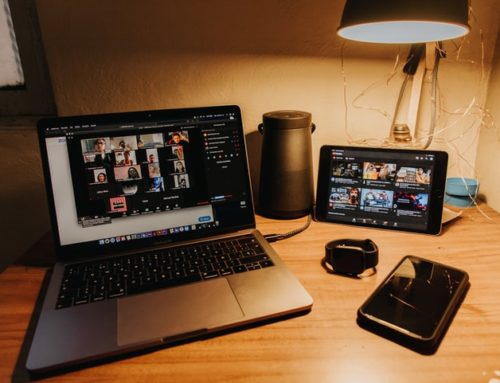My screen was split into twelve little squares. Eight or nine little faces stared at me as some of my students tuned in from kitchens, bedrooms, and dining rooms across the country and around the world. I threw up a virtual background from RuPaul’s Drag Race to lighten the mood in our first optional real-time class discussion. We talked a bit about the readings—an ad hoc collection of articles about the 2014 Ebola pandemic in West Africa, selected in an effort to ‘teach the crisis’ in a class about Africanist anthropology—but we also talked about how bizarre, scary, stressful, and strange our present predicament was. Fearful of becoming nodes of contagion and in compliance with public health experts’ warning against gathering in large numbers, my and many university campuses closed in March. But rather than end the semester early or postpone courses, the directive was to shift courses online, implicitly or explicitly calling to ‘maintain’ the ‘rigor’ of in-person instruction. But this is a fallacy.
What I was doing in the classroom was not contingent solely on my students and I being in the same room. The infrastructure of the university and the city, the structures of the family and the economy, the presence of friends and internships and sports and parties, all of these existed in a particular constellation that allowed our class to happen, and none of them are present in the same way now. We cannot maintain things as if things were normal, and so I made concessions against class-as-usual and towards a more empathetic, open form of learning, with all of my students in mind. Here I offer a few reflections from that transition on surveillance, synchronicity, and support in the context of that revitalized education buzzword, ‘instructional continuity.’
“Will we be able to see them?”
I was annoyed by the question, but I was unsurprised. I knew what was coming next. “How will we be able to make sure they aren’t cheating?”
A week before our classes recessed for spring break, I attended a faculty workshop for taking our classes online. The university had just announced that, after spring break, the campus would remain closed for two weeks (it would later extend this to the whole semester, but not until after students had already departed). This plan—mandating a shift online without postponing classes and hesitating to decide the duration of the shift—meant instructors had one week of in-person classes and one week of spring break to revamp their courses. This was how I found myself in the basement of a brutalist-designed library, adjacent to professors concerned first and foremost about academic dishonesty.
Allergies were irritating my sinuses. Stress about how to change my syllabus was gnawing at my attention. And at the question of how to surveil students, a disjointed series of memories came rushing back—of high school teachers running every little assignment through plagiarism software, of professors suspecting every student was trying to hoodwink them, of instructors requiring obituary clippings before granting extensions. Looking at the thirty students currently in my seminar, and remembering the hundreds I’ve taught in college and high school over the last decade, I could not imagine a less important question than “how can I look into my students’ homes to make sure they’re not cheating?”
The classroom and the university are already rife with surveillance technology, from plagiarism detection to facial recognition to proctoring software (most of which capture students’ data, it should be noted). This is escalating rapidly as campuses shift to remote education. We should push back against policies or technologies that track our students and treat them as either data or suspects—what Jeffrey Moro succinctly calls “cop shit.” For professors who buy into cop shit, the shift online offers both more reasons and more ways to impose surveillance onto our students. This is the opposite of an empathetic approach to teaching and learning.
There are many ways to create exams such that it is difficult to cheat. Another approach is to turn exams into collaborative opportunities rather than isolating stress-inducers, eliminating the cheating problem. But regardless, we should be attempting to establish and build trust with our students in a time when people are severed from many support networks.
Surveillance moves in the shell of another feature of our new pandemic-academic lexicon, synchronous learning. For professors used to talking to students in person, synchronous learning seems like the best way to emulate the classroom. And, grasping for what is familiar, we mistakenly see the discussion board as the seminar room, the video link as the lecture. But online learning is different than in-person learning, online teaching is different than in-person teaching, just like a seminar is different than a lecture is different than a field school. Of course, what many of us are doing for the last half of this semester is not actually online teaching, but triage and improvised instruction. Faced with short timelines for quick turnaround and with few resources and even less experience, we need to reimagine our courses as much as we can. I have students spread across Europe, North America, and Asia. I have students living with people working from home, or caring for siblings or grandparents, or otherwise suddenly living by very different schedules or far from what we might call a ‘learning environment.’ How am I to ethically ask them all to tune in at the same time, several times a week? And why would I? For the sake of it being “like we’re in a classroom?” I don’t think this is worth it.

So, I imagined my course otherwise. I reduced the readings and asked students to post once or twice on discussion boards, to encourage some intellectual analysis and conversation. I recorded short (ten-minute) lectures to aid those who wanted them. I offered up a weekly optional discussion session in case it helped with comprehension or simply camaraderie. Attendance at those is typically 25-50%, and that’s fine. I still think I should have thrown an assignment out, or didn’t reduce enough. I’m committed to making sure this class does not contribute to any of my students’ stress when they are already experiencing dislocation, new kinship obligations, possible health concerns, and potentially poor learning conditions. And that, not cheating or attendance, is my priority. We will learn some—it will be less, but it will be something. Amidst a global pandemic, that’s really all we can hope for. And as I talked with other graduate students or professors, I preached the same thing: go asynchronous, do less, no cop shit, your guiding compass should be empathy and support.
Support is something our students need more than anything. Separated from campus either by eviction, family pressure, or fear, many are now severed not only from the Classroom Experience, but also their social networks, roommates, student organizations, and affinity groups. They are far from the university health center, the Title IX office, the writing center, advisers, the library, and all of the resources that came with these like mental health counseling, group sessions, in-person consultations, the ability to read without a screens. Most of these entities are still active, but it’s not clear what they can do and how they can help from afar. Pretending we can simply recreate our seminar rooms online and everything will be fine ignores that all of these social and material supports were what made learning in-person what it was.
“It’s crazy that we’re expected to just do things like normal,” a student reflected recently, describing to me how her other professors haven’t modified their syllabi at all. Several students struggled to find a quiet room to study while parents and siblings all work and learn at the same time in the same house. Some struggle to find motivation when there is nothing appealing on the other side now that their social lives have been upended. A straight-A student failed an online test in another class. Another is struggling to take dance by submitting recordings of performances. Their learning is disrupted; their summers, internships, and futures are uncertain. Why should we expect them to soldier on as if everything else was normal?
Support your students at every turn. Check in with those that have dropped off of your radar. Do the same with your colleagues—pandemics take their toll not only through the symptoms of a particular illness but all of the other effects of stress and anxiety, isolation and depression, fear and uncertainty. Most of us are in uncharted territory, all of us are facing uncertainty. A little empathy can go a long way.
Online classes are happening in fits and starts as students do their best to keep up and professors do enough to say class was done. We will do enough such that credits can be granted, tuition can be collected (of course!), students can graduate, and everyone can we say we went ahead with class as usual. But this is a pandemic. There is no more normal, no more usual. This is not an opportunity to monitor students or force an in-person model onto an app. It is an opportunity to practice empathy and collaborate with our students to imagine new ways of learning together. We’re all in this together—let’s act like it.
Cite As: Ross, Scott. 2020. “Against Class-As-Usual” In “Pandemic Diaries,” Gabriela Manley, Bryan M. Dougan, and Carole McGranahan, eds., American Ethnologist website, May 16 2020 [https://americanethnologist.org/features/pandemic-diaries/teaching-right-now/against-class-as-usual]
Scott Ross is a PhD candidate in anthropology at George Washington University, where he studies and teaches about interventions in Africa. You can follow him on twitter at @scott_a_ross.




